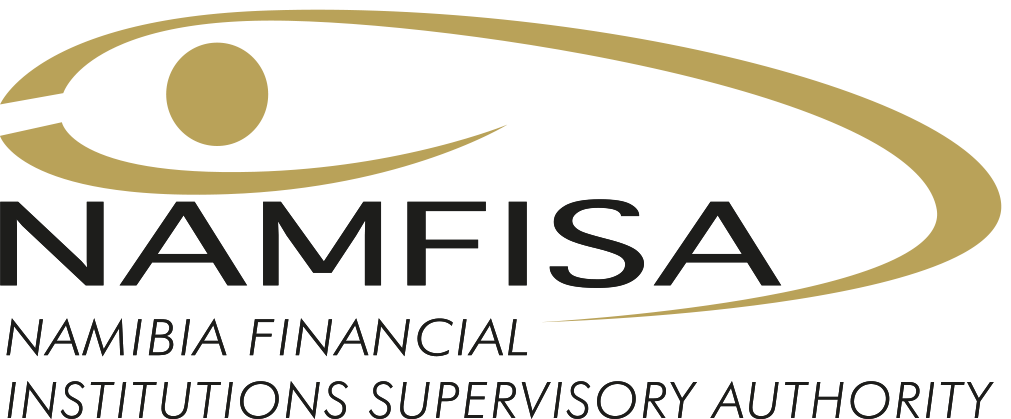From the CEO’s Office
n the first edition of the Consumer Education Bulletin this year, I highlighted NAMFISA’s pivotal role in fostering an effective and efficient financial sector. Our mandate contributes not only to consumer protection and financial literacy, but also to broader national objectives such as poverty alleviation, unemployment reduction, and the attainment of Vision 2030.
One of the key strategic intents of NAMFISA’s new corporate strategy is to cultivate well-informed and financially literate consumers of financial products and services. This commitment is embedded in one of our primary strategic objectives: to educate consumers about financial services and products.
From the onset, consumer education and protection have been central to NAMFISA’s efforts in achieving sound regulation and supervision of the financial sector.
It is within this context that we have dedicated this edition of the Consumer Education Bulletin to the critical topic of debt management. Additional resources on this subject are also available on our website: www.namfisa.com.na.
The FinScope Consumer Survey (2011/12) revealed that 60% of respondents struggle to keep up with their financial obligations, and 76% face difficulties making ends meet. These statistics reflect what we hear in the media and in personal accounts of individuals overwhelmed by debt and uncertainty about their financial future.
It is distressing to witness individuals losing essential assets such as homes, vehicles, and other valuables due to an inability to settle debts. Often, these debts are incurred not for meaningful needs, but for short-term gratification — luxuries and non-essential services that offer fleeting satisfaction.
Borrowing, in and of itself, is not inherently harmful. In fact, productive borrowing — for education, business ventures, or housing — can be empowering. However, in Namibia, borrowing is largely for consumption purposes. This leads to over-indebtedness, creating a cycle of financial strain and asset loss.
Beyond material loss, over-indebtedness carries serious personal consequences. It limits opportunities for investment in one’s future and places a strain on mental and physical health. Studies indicate that individuals with significant debt burdens often suffer from conditions such as anxiety, depression, migraines, ulcers, and even heart attacks.
As a nation aspiring to be “a prosperous and industrialised Namibia, developed by her human resources,” we cannot afford to have a workforce burdened by unsustainable debt and deteriorating health.
We must promote a culture of saving and responsible debt management at every level of society. The most effective tools to manage and reduce debt include creating realistic budgets, tracking expenses, and most importantly, living within one’s means.
Our Consumer Education Programme forms part of a broader strategic initiative under the National Financial Literacy Initiative, launched in March this year. Through this initiative, we aim to enhance the public’s knowledge of financial services, products, and institutions, while reinforcing awareness of consumer rights and responsibilities.
When consumers are informed of their financial rights and responsibilities — and aware of the full spectrum of options available to them — they are empowered to make sound financial decisions. This, in turn, reduces their exposure to debt and prevents the loss of assets and dignity.
I encourage you to engage with the valuable content in this and future editions of the Consumer Education Bulletin. Together, we can build a financially resilient Namibia.
One of the key strategic intents of NAMFISA’s new corporate strategy is to cultivate well-informed and financially literate consumers of financial products and services. This commitment is embedded in one of our primary strategic objectives: to educate consumers about financial services and products.
From the onset, consumer education and protection have been central to NAMFISA’s efforts in achieving sound regulation and supervision of the financial sector.
It is within this context that we have dedicated this edition of the Consumer Education Bulletin to the critical topic of debt management. Additional resources on this subject are also available on our website: www.namfisa.com.na.
The FinScope Consumer Survey (2011/12) revealed that 60% of respondents struggle to keep up with their financial obligations, and 76% face difficulties making ends meet. These statistics reflect what we hear in the media and in personal accounts of individuals overwhelmed by debt and uncertainty about their financial future.
It is distressing to witness individuals losing essential assets such as homes, vehicles, and other valuables due to an inability to settle debts. Often, these debts are incurred not for meaningful needs, but for short-term gratification — luxuries and non-essential services that offer fleeting satisfaction.
Borrowing, in and of itself, is not inherently harmful. In fact, productive borrowing — for education, business ventures, or housing — can be empowering. However, in Namibia, borrowing is largely for consumption purposes. This leads to over-indebtedness, creating a cycle of financial strain and asset loss.
Beyond material loss, over-indebtedness carries serious personal consequences. It limits opportunities for investment in one’s future and places a strain on mental and physical health. Studies indicate that individuals with significant debt burdens often suffer from conditions such as anxiety, depression, migraines, ulcers, and even heart attacks.
As a nation aspiring to be “a prosperous and industrialised Namibia, developed by her human resources,” we cannot afford to have a workforce burdened by unsustainable debt and deteriorating health.
We must promote a culture of saving and responsible debt management at every level of society. The most effective tools to manage and reduce debt include creating realistic budgets, tracking expenses, and most importantly, living within one’s means.
Our Consumer Education Programme forms part of a broader strategic initiative under the National Financial Literacy Initiative, launched in March this year. Through this initiative, we aim to enhance the public’s knowledge of financial services, products, and institutions, while reinforcing awareness of consumer rights and responsibilities.
When consumers are informed of their financial rights and responsibilities — and aware of the full spectrum of options available to them — they are empowered to make sound financial decisions. This, in turn, reduces their exposure to debt and prevents the loss of assets and dignity.
I encourage you to engage with the valuable content in this and future editions of the Consumer Education Bulletin. Together, we can build a financially resilient Namibia.

